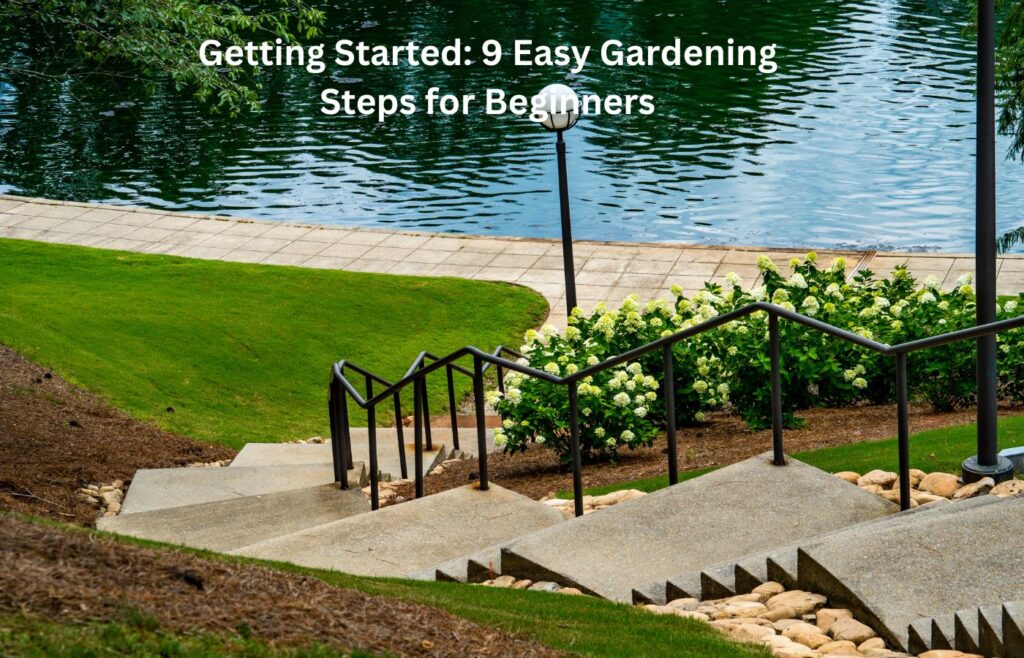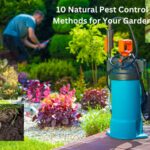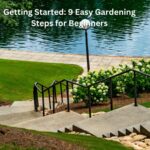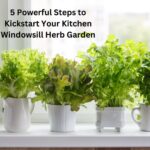Introduction – Gardening Steps for Beginners
Growing your food, creating beautiful outdoor spaces, and maintaining a connection with nature are all made possible through the rewarding and fulfilling gardening hobby. Starting a garden can be intimidating if you’ve never done it before, but with the correct information and resources, you can quickly establish a flourishing garden and easy gardening steps for beginners. This in-depth guide will take you through the fundamental procedures, equipment, and methods for novices.
It also offers helpful pointers and guidance on choosing the best plants, preparing Soil, water, and fertilizing, and controlling common pests and illnesses. Investigate your gardening zone to learn about the local climate and growing conditions before choosing plants. This will assist you in selecting plants that are more likely to flourish and are appropriate for your area and these are easy gardening steps for beginners.
It can be exciting and intimidating to begin gardening construction. It all starts as a depressing piece of grass, but as you expand, it becomes a lovely garden with flowers, fruit trees, vegetable beds, raised beds, and garden art. Your home will look better with a garden, and it’s a great way to pass the time after work. If this is your first time gardening, start by creating your garden using the simple instructions below.
Planning and Picking the Right Spot

Taking baby steps toward great victories is always preferable. Choose a modest area to begin creating your garden. Ensure the location you select gets five or six hours of direct sunlight. Steer clear of an area that gets a lot of wind because it could topple your tender, developing plants. Pollinators will also be hindered in their work by the wind.
Finally, consider how easy it will be to water, harvest, and tend to the plants in your garden. Out of sight, as they say, frequently equates to out of mind. Make a strategy before planting your greens and getting your hands dirty!
Planning: Mark out the locations of each plant, being extremely mindful of the distance between them. Plants require their place, just like humans do. Young plants planted too close to one another may not thrive, become more susceptible to disease, or even die.
Labeling: Humans are naturally forgetful people. Spend some time creating little labels to put next to your plants so that you may be sure what is grown where in your garden and how to identify these plants. You may even use your creativity to create original plant labels.
Organizing: Creating a garden scrapbook and documenting the garden’s development is another excellent tip for novices. You may add drawings, photos, labels, and comments to track how each plant developed in various areas of your garden. You can then create a progress report to gain insight into the characteristics of these plants.
Picking Your Type of Plants
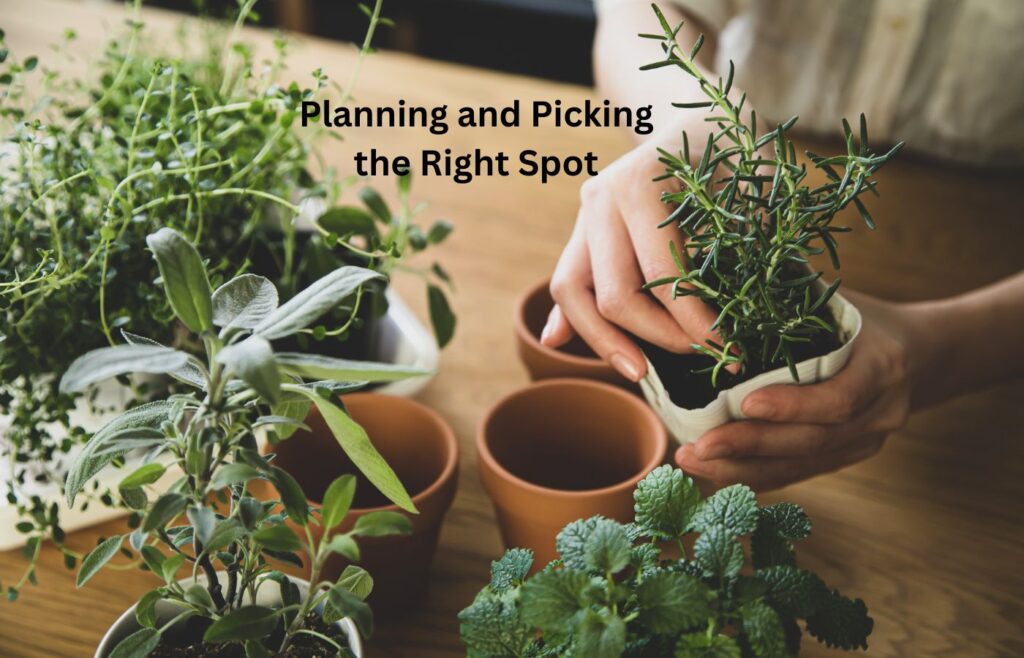
Selecting the kind of garden you want to create is the next step in the gardening process after determining the ideal location for your garden. Will it be a lovely sea of flowers, a spread of herbs, a kitchen garden for your inner chef, or a healthy, nutrient-rich vegetable garden to keep you in shape?
Whatever you decide, start small and gradually create the vision of your ideal garden. Choosing your greens is the most exciting part of gardening right now.
Consider carefully what you want to grow in your garden before choosing a plant. While some plants prefer shade, others thrive in bright sunlight. For this information, check the packet that comes with your plant seeds. Choosing locally native plants can significantly simplify your life, mainly if you are a plant parent.
You can also select the finest vegetables to grow by month or look at your neighbor’s garden to see what plants are doing well there. Thanks to these techniques, you’ll have a good notion of the kinds of plants that will grow well in your garden.
Work on the Soil
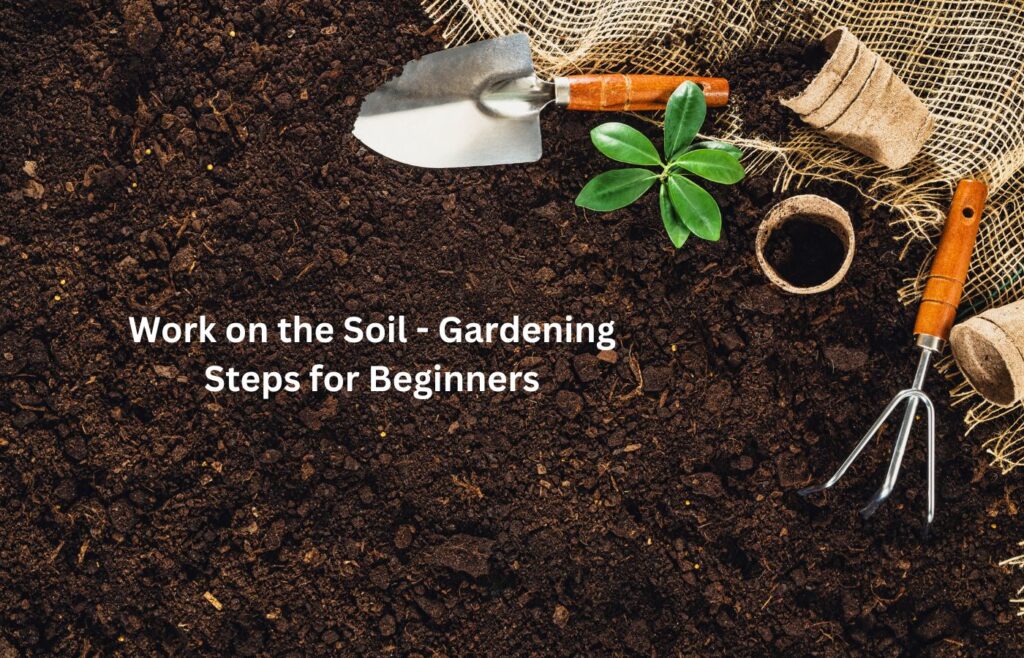
The gardening soil rich in nutrients is usually beneficial to plants. Take your initial step by checking the texture of your dirt; it should be easily clawed and crumble in your hands. It would be challenging for all the plants to spread their roots if your Soil is complex and has a texture similar to clay. Till the Soil and remove the rocks if your Soil is rocky.
Enhancing the Soil’s quality is easier than you may believe and has several advantages. To improve your Soil, add organic compost from vegetable peels and tea compost. One of the most essential gardening steps is soil preparation.
No matter what kind of Soil you have—clay, sandy, or loamy—you must enhance its structure and fertility. Compost, aged manure, or peat moss are examples of organic matter that can improve soil texture, encourage microbial activity, and supply vital nutrients for plant growth. Furthermore, routine soil testing can assist you in keeping an eye on and sustaining the proper pH and nutrient levels for the healthiest plants.
Essential Must-Haves
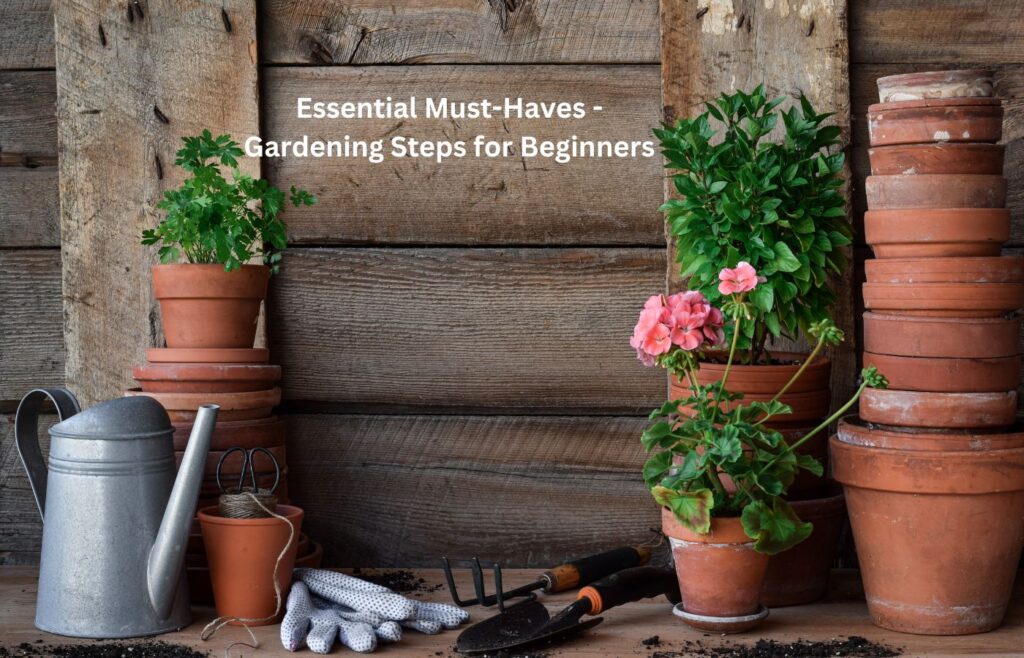
You’ll need a few essential gardening tools to get started after you’ve made a plan. Here is a list of some basic gardening tools.
What you’ll need is Essentials: Pruning scissors are one item that every gardener needs to have in their collection. These will be used to trim back bushes and plants and keep them healthy by chopping out any dead sections.
Digging implements: A few tools will help you till the Soil and prepare it for planting your greens. A garden fork, a trowel, and a spade are required. While the garden fork is used to break up substantial soil clumps and remove weeds and old plant roots, the spade and trowel are used to dig the holes for your plants.
Watering tools: A garden hose (pipe) and a watering can are ideal for thoroughly watering your yard. A garden hose is perfect for larger jobs like irrigating trees and broader spaces. A watering can is best for little, delicate plants.
Caring for Your Plants
After completing the preparations, you must immediately begin planting. The majority of seed packets include simple planting guidelines. Try it out, and you’ll learn the skill of planting along the way.
Unless otherwise indicated on the seed package, plant seeds three to four times as deep as their diameter. Ensure that the seeds are not exposed by completely covering them with Soil and giving them lots of water. Create a hole twice as wide as the root ball to transfer the young plants growing in the pot or containers to their permanent location.
Mix in some organic fertilizer to encourage plant growth and fluff up the Soil. After positioning the root ball, completely cover the roots with Soil. After transplanting, give your plants a light watering.
To help plants retain moisture, control soil temperature, and inhibit the growth of weeds, mulch the area surrounding the plants. To prevent rot, use organic materials such as bark or wood chips and ensure mulch stays away from plant stems.
Water and Fertilizers
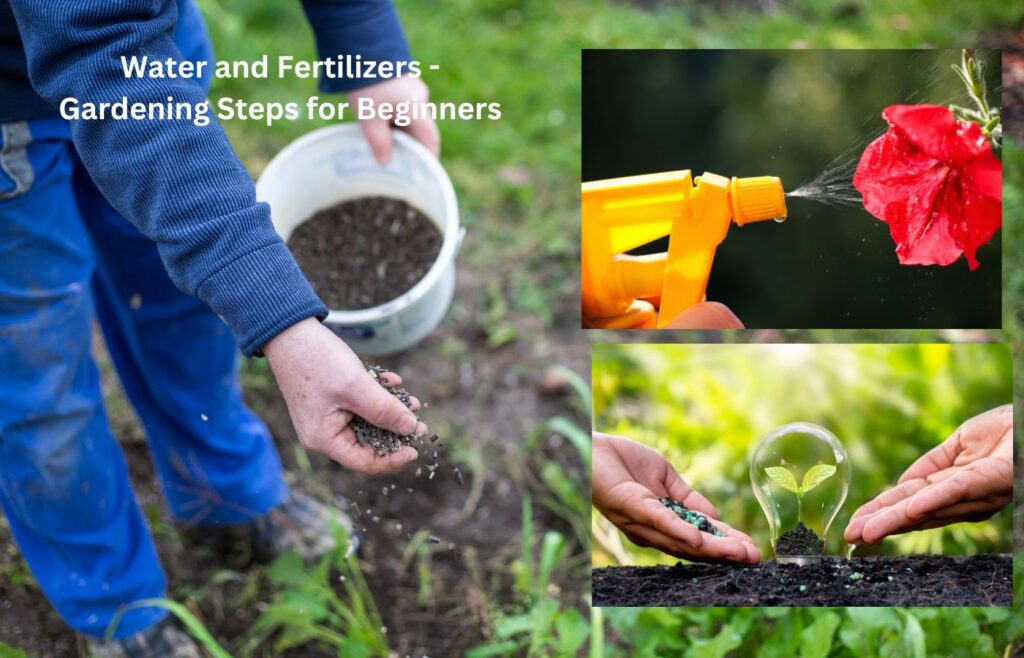
Watering your plants enough water to survive is the aim of watering them, but overwatering can cause waterlogging, harming your plants. Watering your plants slowly is the most significant way to get the water to seep deeply into the Soil. Ideally, moisture should seep into the Soil three to four inches below the surface. In the summer heat, plants require more water. Plants need different water doses at various stages of development.
Young plants require daily watering to promote healthy roots and plant growth, whereas established plants only require watering every two to three days, contingent upon the weather. An old proverb states, “A gardener’s best friend is fertilizer.” Make your organic fertilizer to give your plants an extra push to develop.
To help your plants grow, start with compost, an organic material you may apply to your garden. Anything such as crushed fruit peels, tea bags, coffee grinds, and yard trimmings can be used for this. These organic fertilizers will improve your Soil’s ability to hold onto moisture, promote the growth of beneficial microbes, and fend off pests and illnesses. It will assist you in lessening your carbon footprint as well.
Vegetable Gardening Steps for Beginners
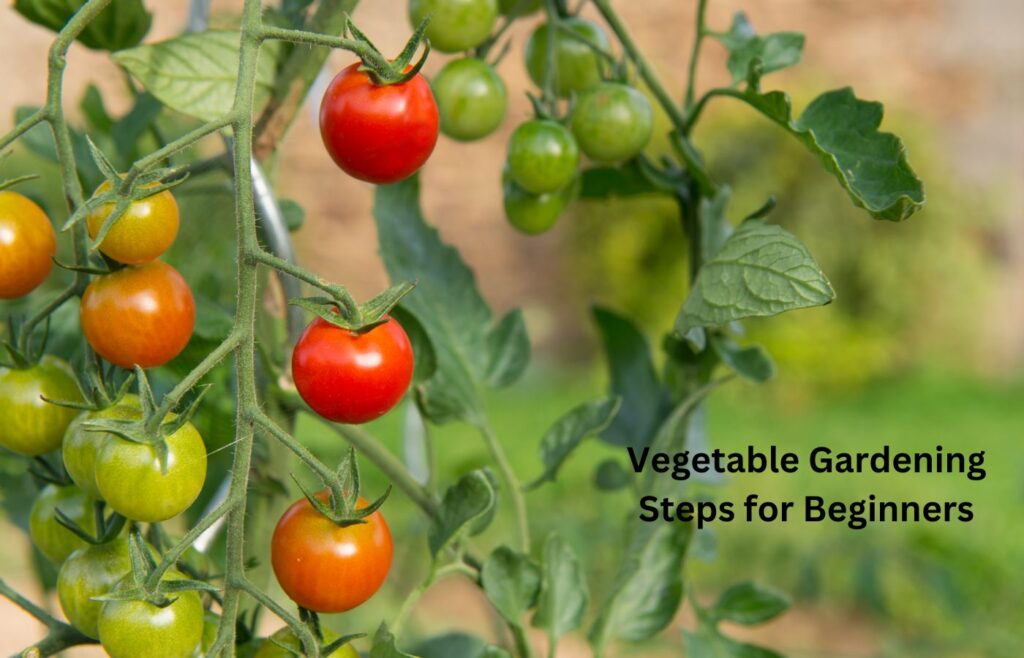
Nothing compares to freshly picked vegetables straight from your garden. You can pick and place the succulent, crisp, savory vegetables directly onto your dish. Every region has a varied ideal planting time, determined mainly by its climate, and each vegetable has a preferred temperature range. Begin by cultivating simple-to-grow produce such as tomatoes, radishes, capsicums, herbs, and salad greens like kale, lettuce, rocket, and chilies. As you gain experience in gardening, you can progress to more time and labor-intensive crops like broccoli and cabbage.
Companion Planting and Pruning the Plants
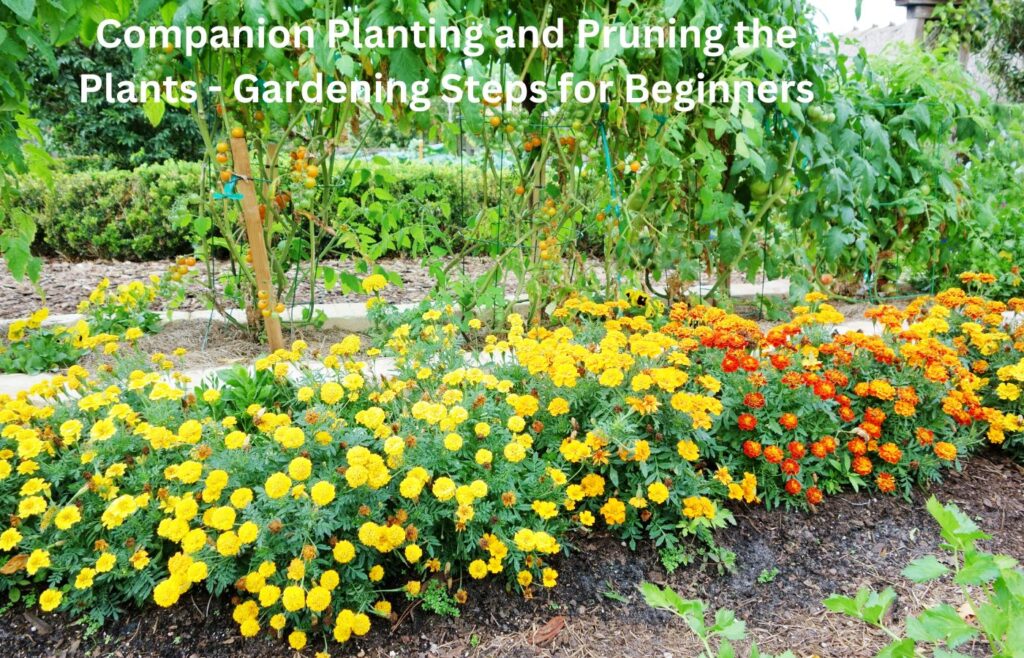
Plants have preferences for who they choose to associate with, just like humans. Companion planting involves planting different crops in the exact location for several purposes, such as providing nutrients, repelling pests, and making the most available space.
Certain species can inhibit one other’s growth, while others do well when planted closely together. For instance, growing tomatoes alongside basil increases yields and deters flies and mosquitoes. Arcadia, carrots, celery, onions, lettuce, marigolds, parsley, and spinach are some more vegetables that go well with tomatoes.
Regarding adversaries, keep tomatoes away from potatoes, rosemary, fennel, cabbage, beets, and maize. Even though gardeners may find it difficult to bear the chore of pruning lovely plants, most plants regularly promote new development and maintain them healthy.
Yet, the kind of plant you have and the climate you live in will determine what and when to prune. For example, flowering and fruiting plants prefer to have their foliage trimmed back in late winter or early spring to promote a healthy yield. Pruning should be done before the new buds appear on spring-blooming trees and shrubs, as they begin to form as soon as the previous blooms fade. And for many other plants to stay healthy, regular trimming is required.
Container Gardening Steps for Beginners

Container gardening is an excellent option for cultivating plants when there is little to no space. Almost any kind of flower, vegetable, herb, or shrub can be grown with success in a container.
The finest plants for tiny containers are compact and dwarf varieties. Choose plants that will thrive in the given climate and degree of sun or shade that the container will receive. Herbs such as basil, chives, thyme, and others grow well in pots that may be placed in a handy location directly outside the kitchen door.
It is vital to have drainage holes in any container you select. Your plants could perish, and the Soil could grow soggy if improper drainage exists. There must be enough room for the extra water to flow out of the holes, even if they are not very big.
However, because soil dries out more quickly in pots than bedding plants, you must water your containers more frequently. You can still cultivate your greens even if you have a tiny garden or none. You can grow both annuals and perennials in window boxes in addition to fruits and vegetables. It adds color and foliage to the outside of your house. Naturally, they aren’t just for tiny areas either; vast gardens will gain from the extra color and level variation they provide.
Keep Up the Good Work
Starting a garden holds the promise of abundance and beauty because it involves choosing the right gardening tools to comprehend the subtleties of plant maintenance and soil preparation, the guides presented here offer novices a strong foundation.
Together, these components provide the foundation for successful gardening, allowing inexperienced and experienced gardeners to create fruitful but also joyful and peaceful environments. It’s evident as we end our in-depth investigation into gardening for novices that gardening offers benefits that go well beyond the crop.
Growing and caring for plants enhances our surroundings, helps us connect with nature more deeply, and significantly impacts our well-being. Gardeners can confidently and curiously take on their gardening projects by using the ideas and techniques presented in this guide. May the garden you tend to flourish and blossom profusely, serving as a testament to your commitment and love for the land.
How do I choose the right plants for my garden?
Consider your climate, sunlight exposure, and soil type. Start with easy-to-grow plants like herbs, tomatoes, or marigolds.
How often should I water my plants?
Water plants deeply but less frequently, ensuring the soil is moist but not waterlogged. Adjust based on weather conditions.
How can I prevent pests and diseases in my garden?
Regularly inspect plants for signs of pests or diseases. Use organic pest control methods like neem oil or companion planting.
When is the best time to plant vegetables and flowers?
It depends on your location and the plant type. Generally, follow local planting guidelines for each specific plant.
How do I prepare the soil for gardening?
Remove weeds, loosen the soil, and add compost or organic matter to improve soil structure and fertility.
What if I don’t have a big yard? Can I still garden?
Absolutely! Consider container gardening or vertical gardening using pots, hanging baskets, or raised beds.
How can I learn more about gardening as a beginner?
Read gardening books, watch online tutorials, join gardening forums, or take a local gardening class.
How long does it take to see results from gardening?
Some plants grow quickly, yielding results in weeks, while others require more time. Enjoy the process and be patient with your garden's progress.
The article “Getting Started: 9 Easy Gardening Steps for Beginners” is written by Saima Hassan, HomenGardenIdeas.com. Our team of passionate writers and experts shares tips and inspiration on gardening, home improvement, and design to help you create your dream space.

